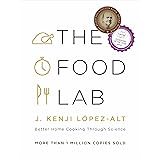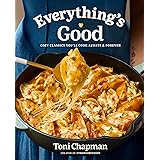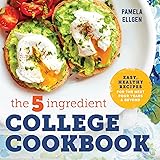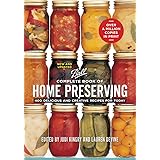Discovering truly delicious and straightforward plant-based meals can often present a challenge for many home cooks. Achieving rich flavors and satisfying textures without relying on traditional ingredients sometimes seems complicated, leaving many searching for reliable, easy options.
Fortunately, the Garlic Mushroom recipe demonstrated in the video above offers a fantastic solution, proving that plant-based dining can be both incredibly flavorful and simple to prepare. This detailed guide will expand upon the video’s steps, providing deeper insights and practical tips for creating a truly memorable dish.
1. Building the Foundation: Essential Aromatics and Spices
The success of any great dish, particularly a plant-based one, hinges on developing a robust flavor base. For this reason, the initial steps of the Garlic Mushroom recipe focus on carefully sautéing key aromatic ingredients to unleash their full potential.
Careful Selection of Olive Oil and Onions
Firstly, the use of 3 tablespoons of olive oil is important for providing a rich base and facilitating even cooking. Extra virgin olive oil, with its distinct fruity notes, can impart an extra layer of flavor to the dish.
Next, 100 grams, or approximately 3/4 cup, of red onion is carefully softened on medium heat for about 3 to 4 minutes. This process is crucial because softening the onions releases their natural sugars, adding a subtle sweetness that balances the other savory elements in the creamy Garlic Mushroom mixture.
Unlocking Garlic and Chili Flavor
After the onions have softened, 20 grams, or 2 tablespoons, of finely minced garlic is introduced to the pan. Frying the garlic on medium-low heat for just 1 minute is essential to prevent it from burning, ensuring its fragrant qualities are highlighted rather than becoming bitter.
A quarter teaspoon of chili flakes is typically added alongside the garlic to introduce a gentle warmth and complexity. The heat level can be adjusted according to personal preference, allowing for a spicier or milder creamy Garlic Mushroom experience.
The Depth of Tomato Paste
Subsequently, 1 1/2 tablespoons of tomato paste are incorporated and fried on medium heat for about 1 minute. This step is particularly important as frying tomato paste caramelizes its sugars, deepening its flavor and enhancing the overall umami profile of the sauce.
This concentrated burst of tomato flavor provides a robust backbone for the rich Garlic Mushroom sauce, making it incredibly satisfying.
2. Perfecting the Mushrooms: Texture and Seasoning
Mushrooms are the star of this dish, and their preparation significantly impacts the final texture and taste. Proper cooking ensures they absorb the flavors beautifully without becoming watery.
Preparing White Mushrooms for Optimal Flavor
Approximately 450 to 460 grams of white mushrooms are added to the pan after the aromatics have developed their flavors. White mushrooms are often chosen for their mild flavor and ability to absorb sauces, though other varieties like cremini (baby bellas) could also be considered for a deeper, earthier note.
It is important that the mushrooms are wiped clean with a damp cloth rather than rinsed, as they can absorb water and become soggy during cooking.
Achieving the Ideal Mushroom Texture
Frying the mushrooms while alternating between medium and medium-high heat is a key technique for achieving the perfect texture. This process encourages the water released from the mushrooms to evaporate, which typically takes around 6 minutes.
Allowing the mushrooms to release and then reabsorb their moisture creates a more concentrated flavor and a desirable, meaty texture, preventing a watery sauce for your Garlic Mushroom creation.
Seasoning for Enhanced Taste
Salt is added to taste, which not only seasons the mushrooms but also helps draw out their moisture during cooking. Additionally, 2 tablespoons of fresh thyme introduce an aromatic, earthy note that beautifully complements the mushrooms and garlic.
Half a teaspoon of ground black pepper completes the seasoning, providing a subtle warmth and sharpness that rounds out the overall flavor profile of the Garlic Mushroom dish.
3. Crafting the Luxurious Creamy Sauce
The creamy element is what transforms the sautéed mushrooms and aromatics into a rich, cohesive sauce perfect for pasta or rice. This section focuses on achieving that velvety smooth texture.
Thickening with Flour and Broth
Firstly, 12 grams, or 1 tablespoon, of all-purpose flour is added to the pan. Frying the flour on medium heat for about 2 minutes is crucial to cook out its raw flavor, ensuring the sauce tastes smooth and well-integrated rather than starchy.
Next, 175 milliliters, or 3/4 cup, of vegetable broth is gradually incorporated. The mixture is thoroughly stirred until all the flour is smoothly blended into the broth, preventing lumps and creating a consistent base for your Garlic Mushroom sauce.
Simmering to Perfection
The sauce is then brought to a boil, which activates the flour to begin thickening the mixture. Subsequently, the heat is reduced, and the sauce is allowed to cook on low heat for about 5 to 6 minutes, allowing it to simmer gently and achieve the desired consistency.
This slow simmering process ensures the flavors meld together beautifully and the sauce reaches a rich, velvety texture that coats the Garlic Mushroom pieces perfectly.
Adding Plant-Based Cream and Finishing Touches
Finally, 3 tablespoons of plant-based cream are stirred into the sauce. Options like oat, soy, or cashew cream can be used to maintain the vegan nature of the dish while contributing a luxurious richness.
After the cream is added, the sauce is cooked on medium-low heat for another minute or so, just long enough to warm through without boiling. An optional sprinkle of black pepper to taste and 6 grams, or 1 tablespoon, of fresh parsley are stirred in at the very end to add a burst of freshness and color to the finished Garlic Mushroom dish.
4. Versatile Serving and Enjoyment
One of the greatest attributes of this Garlic Mushroom recipe is its versatility. It can be adapted to suit various meal preferences and occasions, making it a fantastic staple for any plant-based kitchen.
Complementing Pasta and Grains
The creamy Garlic Mushroom sauce pairs exceptionally well with a variety of starches. As suggested, cooking 225 grams of linguine pasta creates a hearty and comforting meal, with the sauce clinging beautifully to the long strands.
Other pasta shapes, such as fettuccine, penne, or even a short macaroni, could also be used depending on preference. Alternatively, serving the creamy Garlic Mushroom over fluffy rice, as hinted by the “Garlic Fried Rice” mention, provides a different texture and absorption profile.
Elevating the Presentation and Flavor
Once plated, the cooked pasta or rice is generously topped with the luscious Garlic Mushroom mixture. A quarter cup of plant-based Parmesan can be sprinkled over the dish, adding a salty, umami depth that mimics traditional cheese.
A final drizzle of olive oil enhances the overall richness and sheen, while an additional grind of fresh black pepper to taste can elevate the aromatic complexity. This attention to detail ensures every serving of Garlic Mushroom is a delightful culinary experience.
Beyond the Plate: Meal Prep and Variations
This Garlic Mushroom recipe is also suitable for meal preparation, as it reheats well and maintains its flavor. It can be prepared in larger batches and portioned for lunches throughout the week, offering a convenient and healthy option.
Further versatility can be explored by incorporating other vegetables, such as spinach or kale, during the last few minutes of cooking for added nutrients and color. Sun-dried tomatoes or roasted red peppers could also be stirred in to introduce additional layers of flavor to this adaptable Garlic Mushroom dish.











